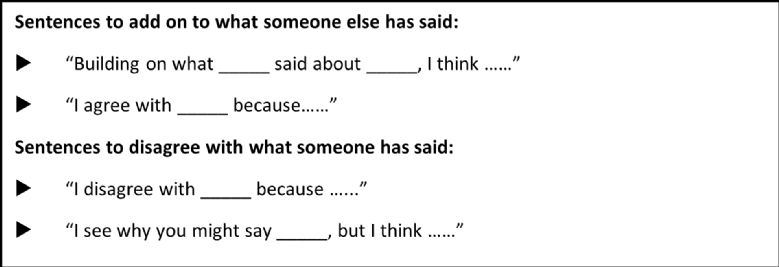November Blog 2021
Checking that our students have understood what we are teaching a is a key part of our Assessment policy. Doing so regularly, in a meaningful way, will then inform a teacher of how to adapt future planning to address misconceptions.
As classroom teachers we have many techniques we can use to check understanding. In the next few pages, we will refresh our thoughts on the most common of these and look at how we can extend the use of technology to get a true understanding of what our students have learnt, rather than what we have taught them.
Mini Whiteboards
A staple of some classrooms and used in many ways. Writing an answer and holding it up is probably the most obvious use, but how can we go beyond this?
A while back I found this article: https://thegoldfishbowl.edublogs.org/2015/11/29/mini-whiteboards/
Although a few years old, Miller’s comments are still valid for our lessons today.
Whiteboards are a way of getting immediate feedback about student understanding, with an effective sequence always starting with a well-designed task or question. Rather than just waiting as students write, this time can be used to seek the most useful responses. Do most students get it or not? Where are the great examples that can be used as models? Where are the examples of common errors that students can learn from? Which students are making the same errors?
…One of the issues that we have, as I am sure many schools do, is the use of unnecessary fillers in spoken responses. [Due to a] lack of confidence in what they are saying. Or that they don’t know what they are going to say before they start saying it. The few seconds it takes to write a couple of ideas down on a whiteboard can help to eliminate both of these.
Miller talks about this well question. These are an integral part of our planning on itslearning, and we should see this in the key question's section of the plan.
Miller goes on to discuss what can then be done with the responses seen and how lessons can be adapted accordingly.
Going beyond this, rather than just letting whiteboard responses be one-off instant feedback to you, you can record general perceptions and misconceptions in the review notes of the plan for development when reviewing the topic before the next time you deliver. This idea of recording general thoughts can apply to our questioning of the students too.
Self-marking tests
Whichever platform we use, self-marking tests have huge benefits on teacher workload and meaningful analysis of results.
Some of the best tests I have seen staff use are the simplest. Succinct questions with multi choice answers. Really think about what it is you need the students to understand and focus down to that. When used for homework, there is no need to fill a particular time frame with extra questions – if you can gauge understanding in 10 questions taking less than a minute each, then why add anything else
There are currently two test versions in itslearning. The itslearning development team have released the new version, however this still has some limitations, and some staff prefer using the older version. There are no plans yet to remove the older version, and old tests can be easily converted to a new once it is functioning fully:
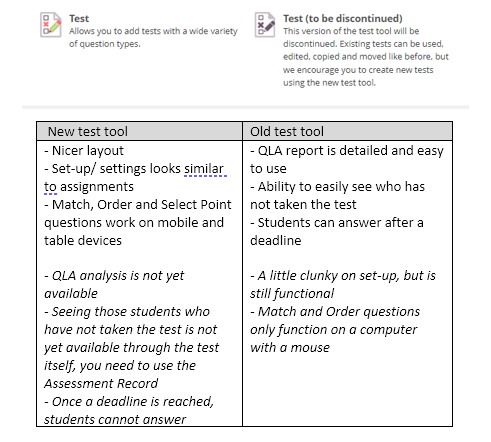
When creating self-marking tests, please consider the following questions as options:
Fill in the blanks – take a section of text (copy for an electronic resource or type in yourself), highlight the keywords to demonstrate understanding – done!
This type of question has variations:
- Just selecting the word means the students have to get the correct spelling, there are options for adding in common misspellings, so the students get the marks if they spell it a different way.
- There is also the option for marks to be awarded if students use the correct capitalisation.
Select from a list – very similar to the above, but students will be offered a list to choose from, as well as the words highlighted in the text, you can add in extra words to make the students think harder.
Differentiation opportunity – please consider the option of creating two versions of the above. If you create one homework with the ‘Fill in the blanks’ and one ‘Select from a list’ then you can allocate accordingly to the class.
Spelling tests – for those subjects that need keywords spelt correctly, we can use a self-marking test as a tool for independent practice (Yes, I know we have no control over them googling the answers, but we never do with homework.) Building the opportunity for them to independently try is always good. You will obviously need to design a way that you can ask them to type a particular work without typing it yourself so do consider the option for recording audio files in the questions.
Support sheets:
Setting up
Selecting from a link and fill in the blanks
Examples seen recently:
English – 10 questions
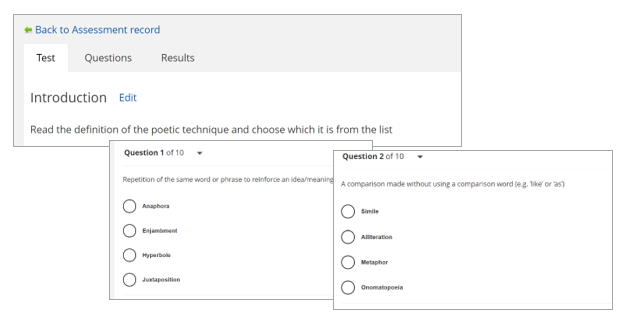
Science – A CFU test set, with support videos if needed. This test has been left open for as many attempts as they want, so students can independently aim for improved scores. With a test open like this, you could attach the same test to a revision plan later in the year.
- Currently, only old tests can be accessed after the deadline. The workaround for this on the new test would be to keep the original deadline and then change to a later date in the year for the revision session.
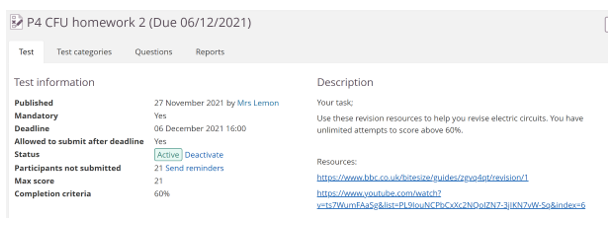
Differentiation opportunities – could the videos be in a ‘support’ CFU that is targeted at key students through the permission settings? Could you ‘copy’ this test having created it, and add in some challenge questions at the end and then target to you higher attaining students.
Matrix (survey question)
We’ve all had students in our classes that just don’t seem to get it: even though they are getting the answer right, they can’t tell you why. It is therefore key that we know what level the students believe their own understanding is at.
A matrix question is a grid question where students can rate their confidence options for various questions. The below example is set up with RAG options for five photography techniques. These questions can be completely tailored to you – there are various other options, as well as how the results will come out to you on the support sheet.
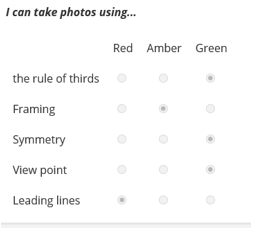
Support sheet:
There are many more ways that itslearning can support our checking for students understanding. Kate Humby is now fully training on how to create resources and support your curriculum. Through the Spring term she will be working with Heads of Subject offering her support. Please do contact her if you’d like her to create a resource for you, or you would like some specific training, so you can create these resources for yourself.


